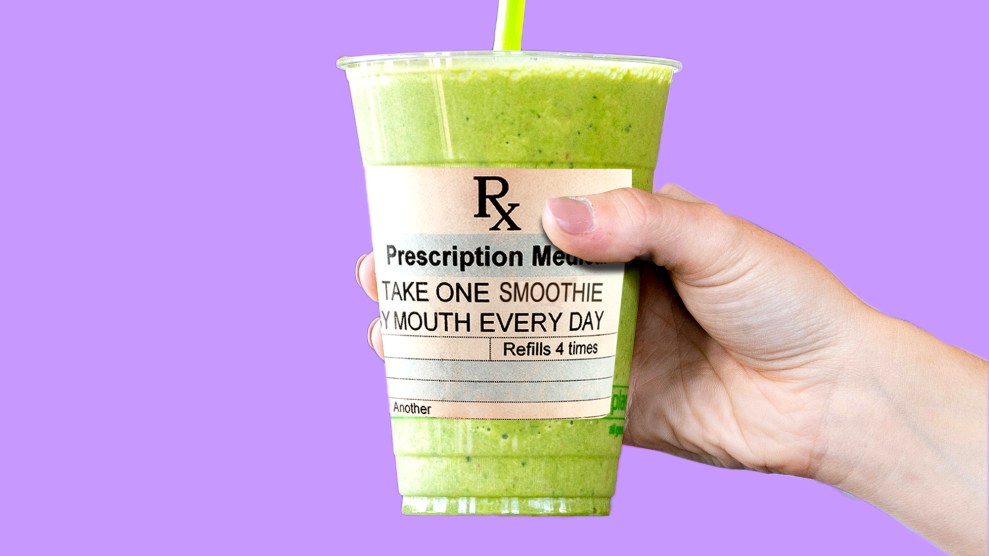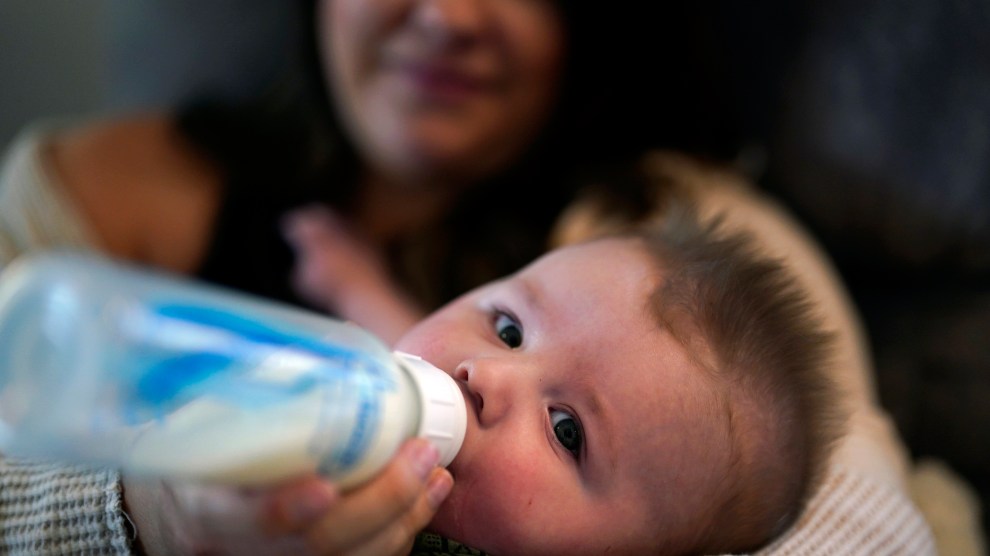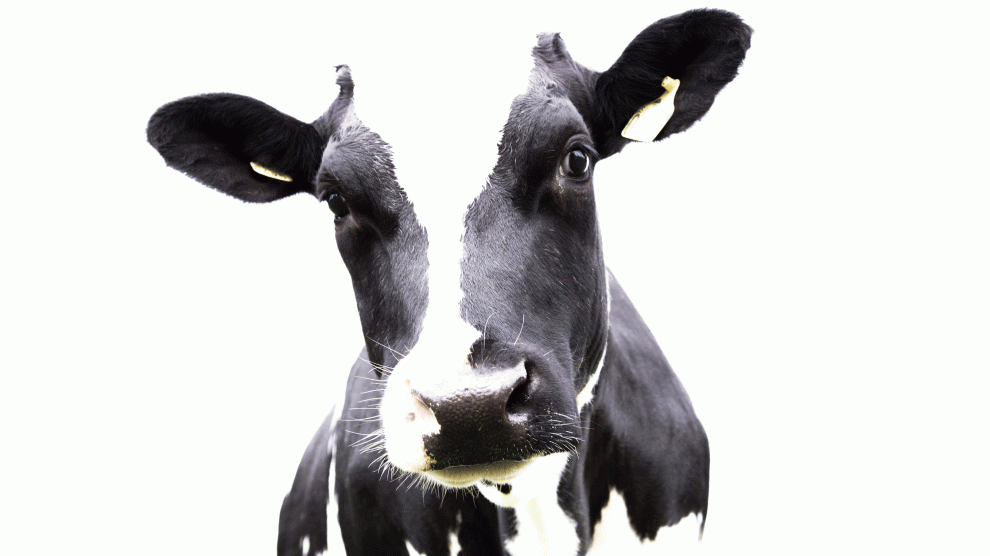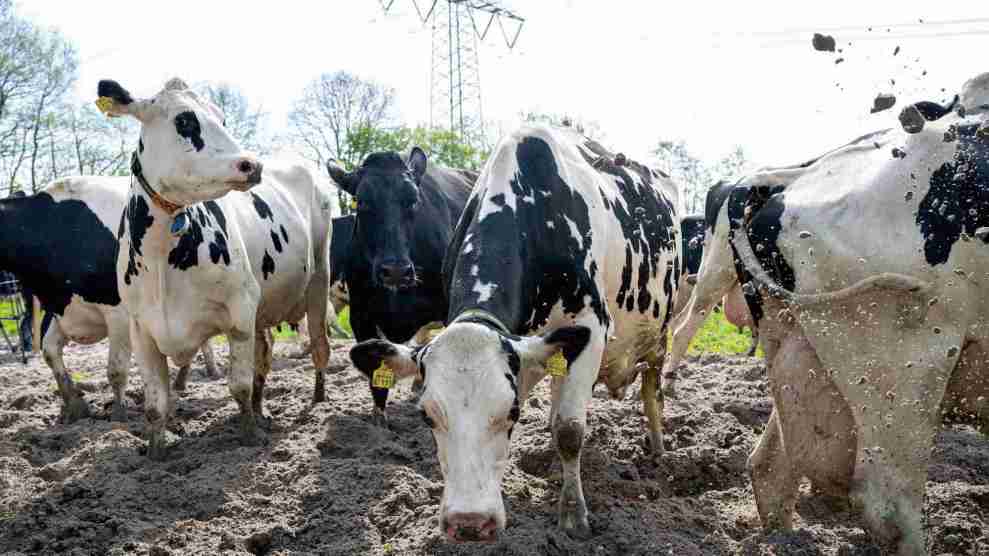
Mother Jones; TikTok (2)
If you go on TikTok or Instagram, you’ll see legions of wellness influencers promoting the benefits of unpasteurized “raw” milk, which hasn’t been heated to kill off illness-causing microorganisms. Raw milk is risky business at the best of times, and despite what some influencers claim, there are no nutritional benefits to drinking it, according to the CDC. But it’s now also a vector for H5N1, the new bird flu spreading through cows.
On April 1, it was confirmed that H5N1 had spread to at least one person who worked with cattle—as of April 30, 36 dairy herds have been confirmed to have had cases of bird flu, although that’s a likely undercount based on limited testing. On April 25, the FDA announced its finding that one in five milk samples from grocery stores had trace amounts of H5N1. Colombia has restricted the import of beef from US states where the virus has been detected in cows, and the USDA is now testing ground beef for H5N1. The World Health Organization reported that between January 2003 and March 2024, 56 percent of bird flu cases detected in humans were fatal. Half the domestic cats on a Texas farm also recently died after drinking raw milk from cows infected with H5N1.
Pasteurization eliminates this risk. “Raw milk does not go through this process, so consuming [it] could unknowingly place you at risk of infection with H5N1,” said Brian Labus, a University of Nevada, Las Vegas public health professor and epidemiologist. There are still other ways that H5N1 can spread besides drinking raw milk, such as to dairy workers (human-to-human transmission hasn’t been detected in the US yet). But according to the Conversation, that’s not a common vector. And if other animals drink unpasteurized cow’s milk, they also risk contracting H5N1, just like any human would.
Raw milk influencers have a sizable following, including some whose content doesn’t center solely on diet. Take model Liz Siebert, who has over a million followers on TikTok, and who made videos last year on how she gets her raw milk from a nearby Amish farm, claiming raw milk was helping get her health back on track and reduced her allergy symptoms (most of these clips have now been deleted, but the reaction videos debunking her claims have not). Raw milk is also a big hit among fitness influencers and “crunchy” moms—parents who want food that’s “natural,” like in the good old days, when viruses killed a lot more people.
“People are seeing more influencers talk about raw milk over the last year or more,” said Jessica Gall Myrick, a Pennsylvania State University health communications professor. Myrick says that trend “follows the changes in state laws allowing more retail and on-farm sales.” As a result, more and more people are buying raw milk: Ambrook Research reports that sales “jumped 27 percent, from $12 million in 2021 to $19.4 million” in 2023.
Dubious claims about raw milk predate social media (as does research debunking the supposed benefits), but it’s given those claims a new life. A 2022 research paper estimates that around four and a half percent of Americans are consuming raw milk at least once annually. In videos on TikTok, some influencers do acknowledge that there are people who think their raw milk obsession is bizarre—but they still claim that they’re drinking it because it improves their health. Which is ironic: besides bird flu, raw milk consumption has been linked to cases of the diseases salmonella and listeriosis. But you’re not going to hear about that in a podcast clip on TikTok of Gwyneth Paltrow talking about unpasteurized milk.
“Seeing an attractive influencer claim to be healthier and happier thanks to drinking raw milk can inspire people and give them hope for a similar outcome,” Gall Myrick said. “We remember anecdotes better than statistics about risk, too.” But Gall Myrick does think that people with significant online platforms can also be helpful in dispelling health misinformation about raw milk in a clear and engaging way, pointing to a video of author John Green talking about its dangers as an example.
View this post on Instagram
It also doesn’t help that social media feeds quickly become echo chambers by design. “The more people see of this type of pro-raw-milk content in their social media feeds, algorithms will keep giving them more of it, and then they are less likely to see stories about people harmed by raw milk,” Gall Myrick said.
Many states still do not allow raw milk to be sold in stores, with some exceptions for farms, meaning that people inspired by raw milk influencers may have to go through more hurdles to buy it. “You can’t find raw milk in most grocery stores, and social media likes and shares are not going to change that,” Labus said. For now, that is.
















